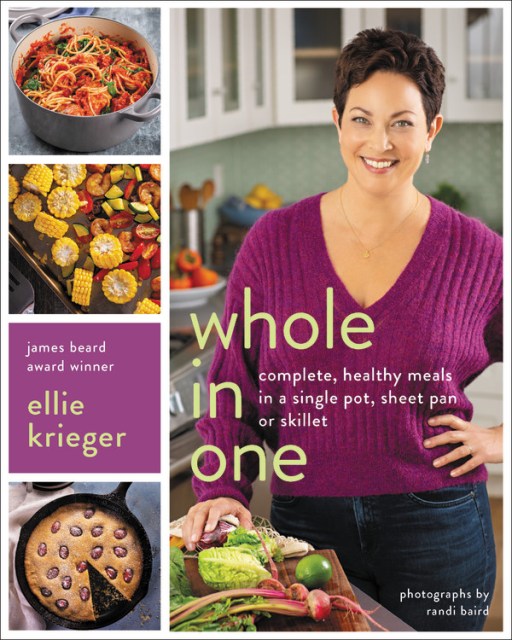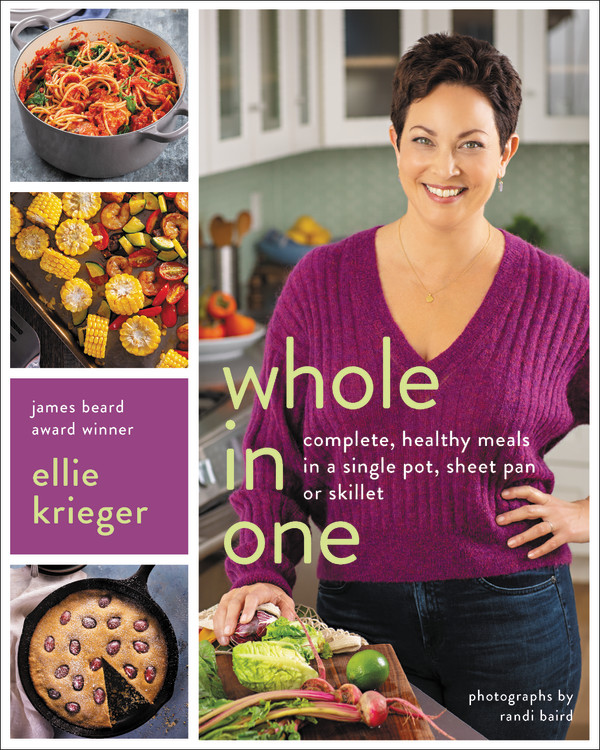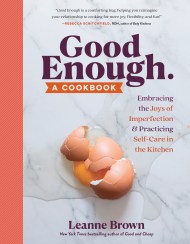Whole in One
Complete, Healthy Meals in a Single Pot, Sheet Pan, or Skillet
Contributors
Photographs by Randi Baird
Formats and Prices
Price
$30.00Price
$38.00 CADFormat
Format:
- Hardcover $30.00 $38.00 CAD
- ebook $15.99 $20.99 CAD
This item is a preorder. Your payment method will be charged immediately, and the product is expected to ship on or around October 15, 2019. This date is subject to change due to shipping delays beyond our control.
Also available from:
New York Times bestselling author and James Beard Award winner Ellie Krieger gives her signature spin to the one-pot trend for meals that are nutritious, easy, and delicious.
We want the food we love and we want to be healthy, but who has the time or energy to figure it all out? James Beard Award winner and bestselling cookbook author Ellie Krieger shows you how to create a meal in a single pot, sheet pan, baking dish, or skillet — no additional gadgets or tools required. Divided by main ingredients — meat, poultry, seafood, vegetarian, dessert — and further separated into sheet pan, baking dish, skillet, and pot-cooked meals, the 125 nutritionally complete dinner recipes (plus healthy desserts) can each be prepared simply.
Whole in One puts home-cooked meals within reach by minimizing the work load on both ends of the dinner process — cooking and clean-up — with one pot dishes that check every box. Minimal steps? Check. Crowd-pleasing flavors? Check. Easy-to-find ingredients? Check. Nutritionally complete? Check. Breezy cleanup? Check.
We want the food we love and we want to be healthy, but who has the time or energy to figure it all out? James Beard Award winner and bestselling cookbook author Ellie Krieger shows you how to create a meal in a single pot, sheet pan, baking dish, or skillet — no additional gadgets or tools required. Divided by main ingredients — meat, poultry, seafood, vegetarian, dessert — and further separated into sheet pan, baking dish, skillet, and pot-cooked meals, the 125 nutritionally complete dinner recipes (plus healthy desserts) can each be prepared simply.
Whole in One puts home-cooked meals within reach by minimizing the work load on both ends of the dinner process — cooking and clean-up — with one pot dishes that check every box. Minimal steps? Check. Crowd-pleasing flavors? Check. Easy-to-find ingredients? Check. Nutritionally complete? Check. Breezy cleanup? Check.
Genre:
- On Sale
- Oct 15, 2019
- Page Count
- 256 pages
- Publisher
- Da Capo Lifelong Books
- ISBN-13
- 9780738285047
Newsletter Signup
By clicking ‘Sign Up,’ I acknowledge that I have read and agree to Hachette Book Group’s Privacy Policy and Terms of Use







